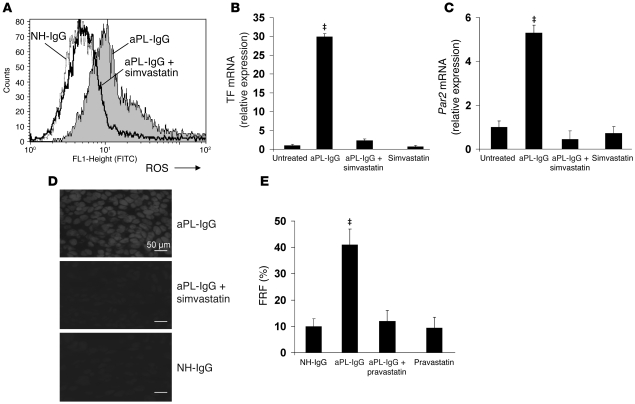Figure 5. Statins inhibit TF and PAR2 synthesis and prevent neutrophil oxidative burst and oxidative damage in aPL-IgG–treated mouse placentas.
Pregnant C57BL/6 mice were given aPL-IgG or NH-IgG as in Figure 3; some also received 20 μg simvastatin or 5 μg pravastatin i.p. 18 h before aPL-IgG administration (n = 5–10 mice per group). (A) On day 8, 2 h after aPL-IgG or NH-IgG injection, a blood sample was drawn in order to determine ROS production and phagocytosis in neutrophils by FACS, measured as the number of DHR-positive cells. aPL-IgG increased ROS production, whereas simvastatin prevented neutrophil oxidative burst in aPL-IgG–treated mice. The number of DHR-positive neutrophils was similar between NH-IgG treated and aPL-IgG plus simvastatin–treated mice. (B and C) RT-PCR analysis was performed in isolated neutrophils to quantify TF and PAR2 gene expression. Neutrophils from aPL-IgG–treated mice showed a 28-fold increase in TF mRNA (B) and a 5-fold increase in Par2 mRNA (C). Simvastatin prevented aPL-IgG–induced increase in TF and PAR2 synthesis. (D) Mice were killed on day 8, and deciduae were removed to determine superoxide generation using DHE fluorescence. Increased free radical–mediated lipid peroxidation was observed in deciduae from aPL-IgG–treated mice. No oxidative damage was observed in NH-IgG and aPL-IgG plus simvastatin–treated mice. Scale bars: 50 μm. (E) Mice were killed on day 15 of pregnancy, uteri were dissected, and FRF was calculated. Similar to the effects of simvastatin, pravastatin treatment prevented fetal loss. ‡P < 0.05 versus aPL-IgG plus simvastatin or pravastatin as appropriate.

